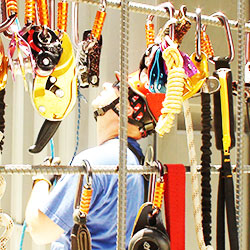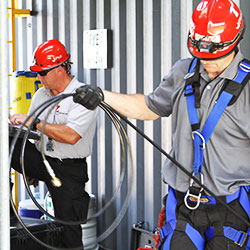![]() This memorandum provides guidance on the enforcement of the Confined Spaces in Construction standard published on May 4, 2015. The new standard goes into effect on August 3, 2015. Requests for an extension of the effective date have indicated a need for additional time for training and the acquisition of equipment necessary to comply with the new standard. OSHA will not delay the effective date, but instead will postpone full enforcement of the new standard for 60 days from the effective date of August 3, 2015 to October 2, 2015.
This memorandum provides guidance on the enforcement of the Confined Spaces in Construction standard published on May 4, 2015. The new standard goes into effect on August 3, 2015. Requests for an extension of the effective date have indicated a need for additional time for training and the acquisition of equipment necessary to comply with the new standard. OSHA will not delay the effective date, but instead will postpone full enforcement of the new standard for 60 days from the effective date of August 3, 2015 to October 2, 2015.
During this 60-day period, OSHA will not issue citations to an employer making good faith efforts to comply with the new standard, as long as the employer is in compliance with either the training requirements of the new standard, found at 29 CFR 1926.1207, or the training requirements found at former 29 CFR 1926.21(b)(6)(i), which is provided:
All employees required to enter into confined or enclosed spaces shall be instructed as to the nature of the hazards involved, the necessary precautions to be taken, and in the use of protective and emergency equipment required. The employer shall comply with any specific regulations that apply to work in dangerous or potentially dangerous areas.
Employers who fail to train their employees consistent with either 29 CFR 1926.1207 or 1926.21(b)(6)(i) would properly be cited for violation of 1926.1207(a). Factors OSHA will consider when evaluating whether an employer is engaged in good faith efforts to comply with the new standard include:
- • If the employer has not trained its employees as required under the new standard, whether the employer has scheduled such training,
- • If the employer does not have the equipment required for compliance with the new standard, including personal protective equipment, whether the employer has ordered or otherwise arranged to obtain such equipment required for compliance and is taking alternative measures to protect employees from confined space hazards, and
- • Whether the employer has engaged in any additional efforts to educate workers about confined space hazards and protect workers from those hazards.

 Washington, D.C. – In response to requests from the construction industry, OSHA is delaying full enforcement of its recently promulgated Confined Spaces in Construction Standard to allow employers additional time to comply with the rule.
Washington, D.C. – In response to requests from the construction industry, OSHA is delaying full enforcement of its recently promulgated Confined Spaces in Construction Standard to allow employers additional time to comply with the rule.  When a student returns to one of our classes after a few years, we’ll often hear, “Wow, things sure have changed! There are a lot of new techniques and equipment since the last time I attended.” So, why do we change our courses on a regular basis? If it worked back then, why change it?
When a student returns to one of our classes after a few years, we’ll often hear, “Wow, things sure have changed! There are a lot of new techniques and equipment since the last time I attended.” So, why do we change our courses on a regular basis? If it worked back then, why change it? 

 The Occupational Safety and Health Administration today issued a
The Occupational Safety and Health Administration today issued a 
 Host Employers, Controlling Contractors, and Entry Supervisors
Host Employers, Controlling Contractors, and Entry Supervisors


